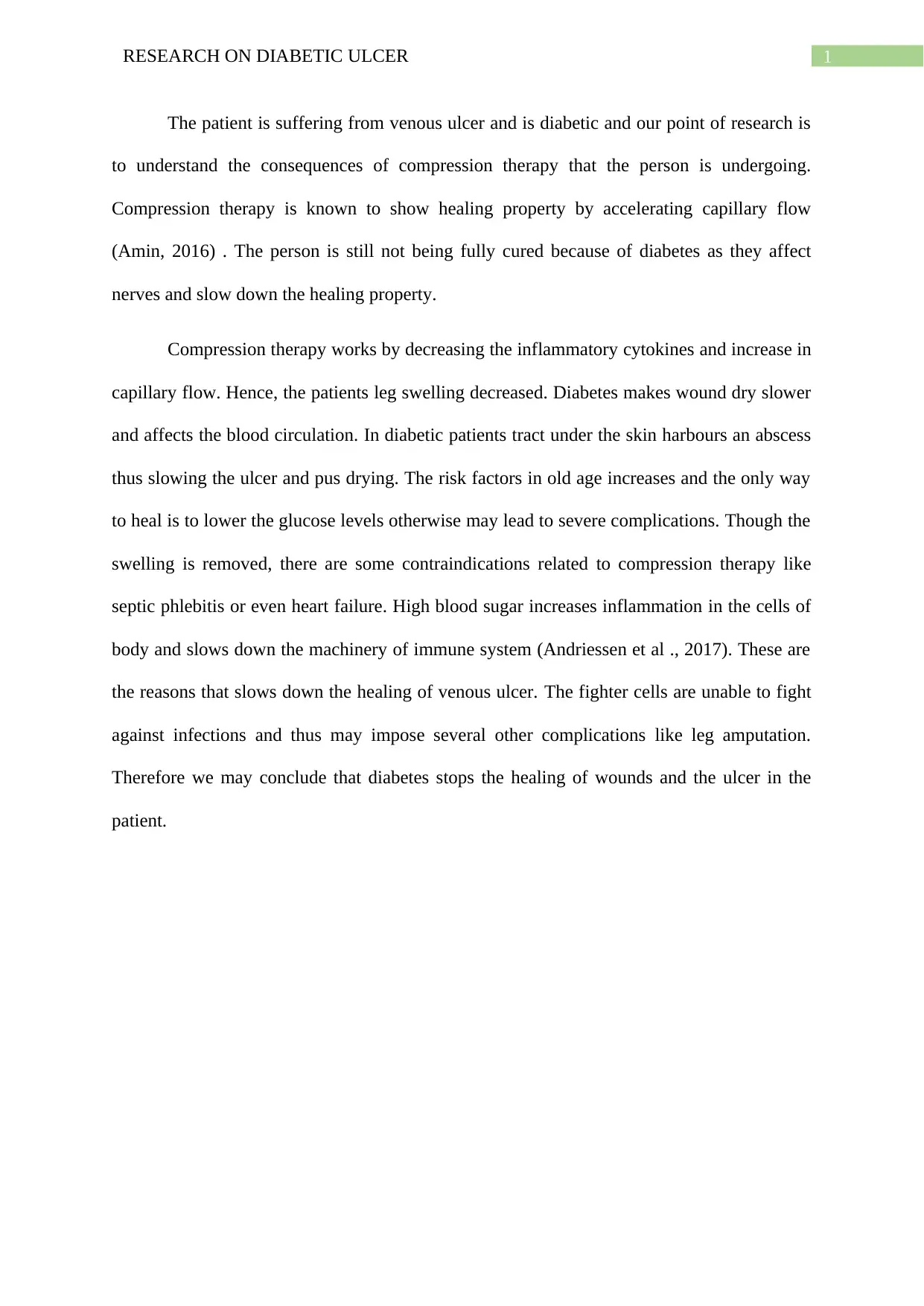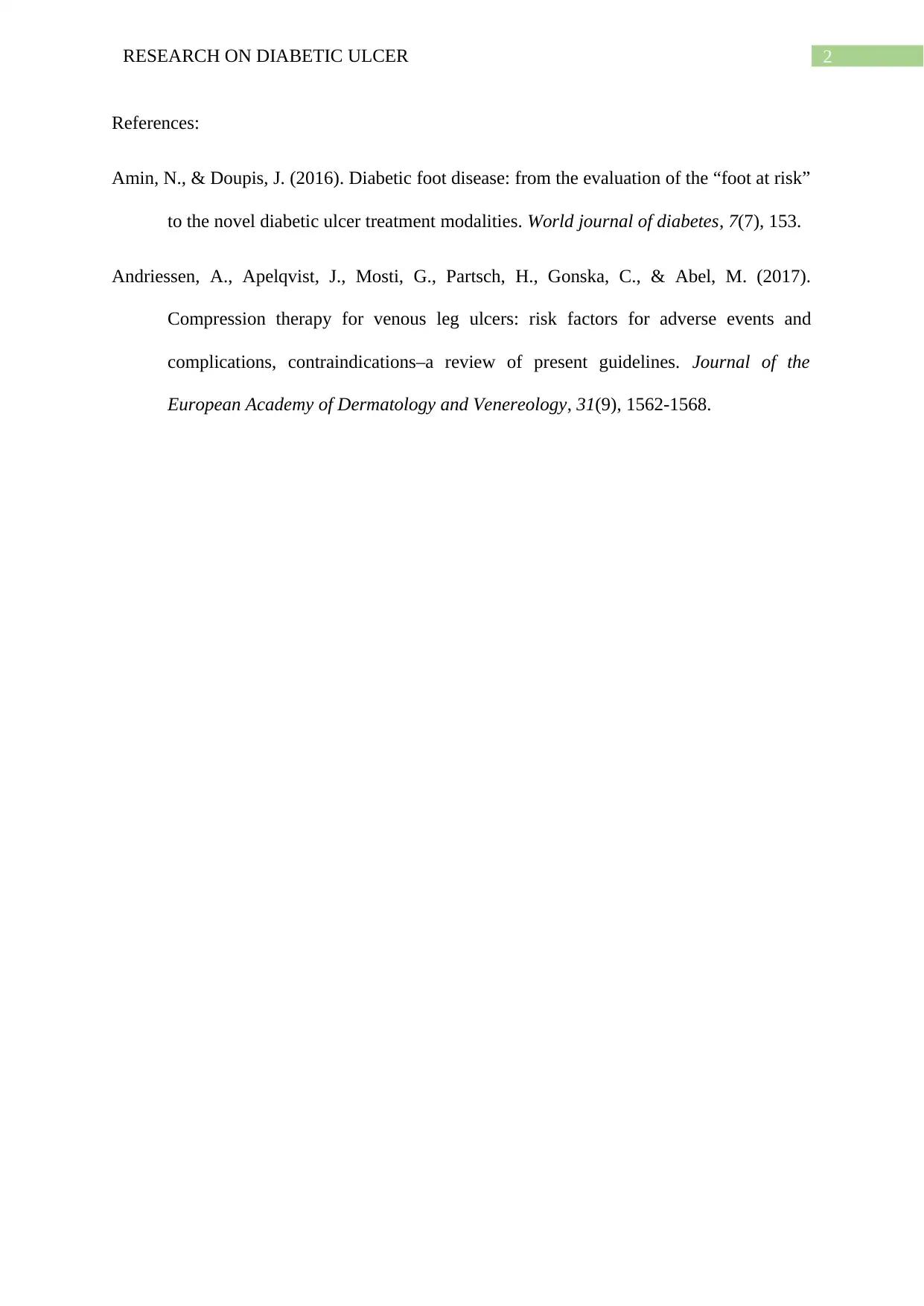Diabetes Research: Effects of diabetes on the health and treatment
VerifiedAdded on 2022/11/18
|3
|397
|3
Report
AI Summary
This research paper examines the effects of diabetes on health and treatment, specifically focusing on the diabetic ulcer. The study explores the impact of diabetes on wound healing, the role of compression therapy, and the complications associated with the disease. It highlights the challenges faced by patients with diabetes, including the slowing of the healing process, and the potential risks associated with treatments. The paper also reviews the importance of managing blood sugar levels and the need for a comprehensive approach to managing diabetic ulcers. The paper also includes a discussion on the importance of managing blood sugar levels and the potential risks associated with treatments.
1 out of 3








![[object Object]](/_next/static/media/star-bottom.7253800d.svg)